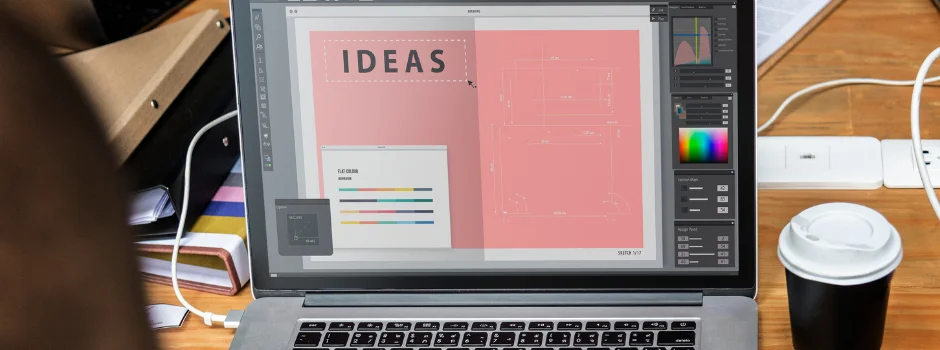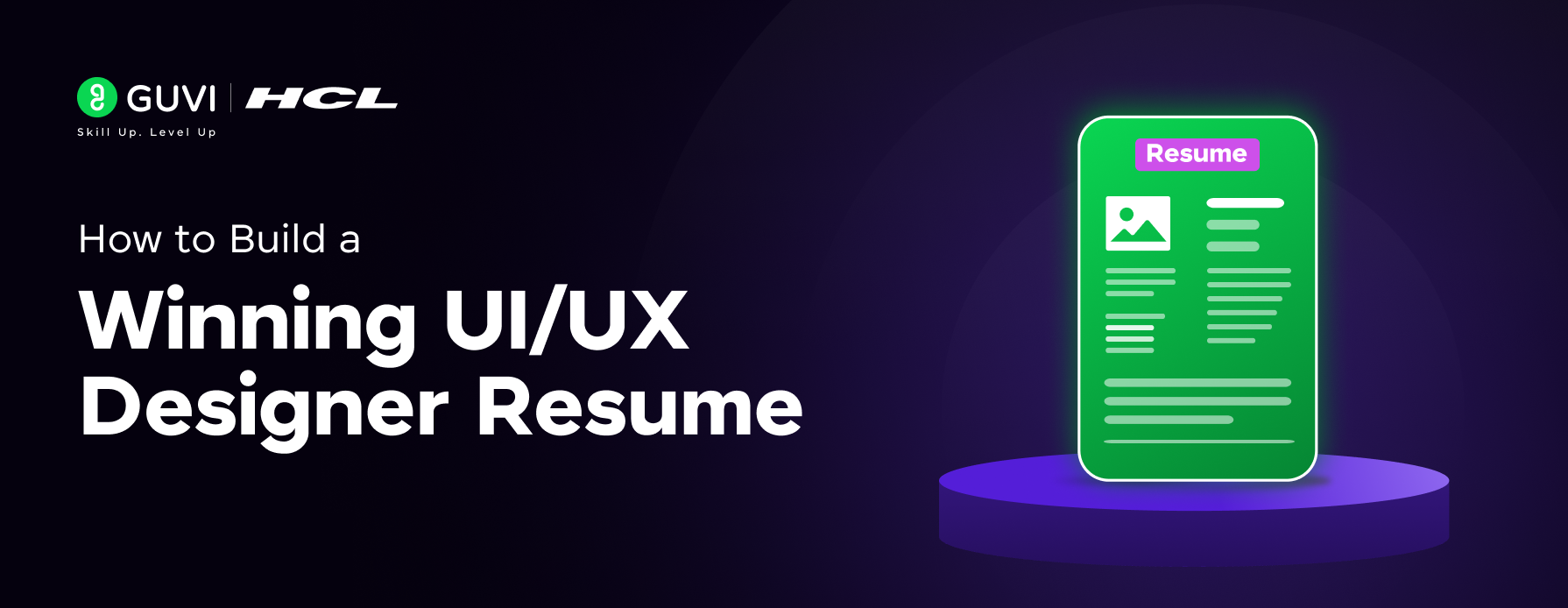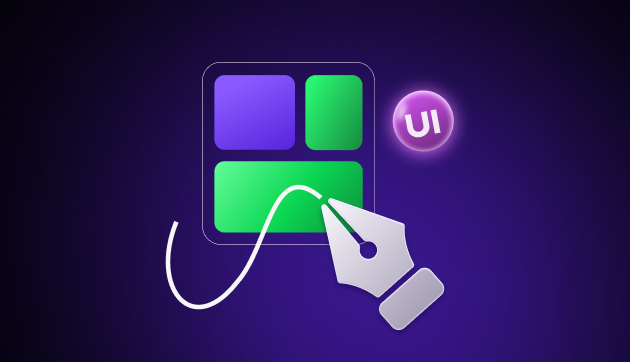
8 Important Things a UI/UX Designer Should Know
Mar 13, 2025 6 Min Read 7011 Views
(Last Updated)
The technological world is evolving at a rapid pace but one thing is very clear amidst this development, the success of any digital product/service solely depends on the user experience, and no matter how much you try to convince them, if they don’t like the experience that they gain from the product, they will not use it at any costs.
The role of a UI/UX designer is to craft a product’s experience according to user’s needs and make sure that they have a positive experience overall. But for that, there are certain things a UI/UX designer should know to do.
That is what you are going to learn in this article, 8 important things a UI/UX designer should know to make visually stunning as well as optimized user interface. In addition to that, you will also be learning a brief about who a UI/UX designer is as many have a lot of confusion regarding the subject.
So without further ado, let’s get started.
Table of contents
- Who is a UI/UX Designer?
- 8 Things a UI/UX Designer Should Know
- User-Centered Design (UCD)
- Visual Design Principles
- Responsive Design
- Information Architecture
- Prototyping Tools
- User Feedback and Iteration
- Accessibility
- Collaboration and Communication Skills
- Conclusion
- FAQ
- What are the key visual design principles?
- What is information architecture in UI/UX design?
- What role does accessibility play in UI/UX design?
- What distinguishes UI from UX design?
- How can UI/UX designers enhance accessibility in their designs?
Who is a UI/UX Designer?

Before we dig deep into the things a UI/UX designer should know, first let us clear up the concept of UI/UX designing and what they do to enhance a company’s outlook.
A UI/UX designer, short for User Interface and User Experience Designer, is a creative professional responsible for crafting the visual and interactive elements of digital products to ensure a seamless and enjoyable user experience.
They hone a specific skill set that is required for UI/UX designing and utilize them to create visually appealing as well as user-friendly interfaces.
The UI aspect involves designing the graphical layout, aesthetics, and visual elements of a website, application, or software. This includes creating interfaces that align with brand aesthetics and utilizing color theory, typography, and layout principles to enhance user engagement.
On the other hand, the UX aspect focuses on the overall user experience, emphasizing usability, accessibility, and user satisfaction. UX designers conduct thorough user research, create user personas, and develop wireframes and prototypes to optimize the user journey. They prioritize understanding user needs, behaviors, and pain points, working to create intuitive and efficient designs.
There are a lot of product-based companies that need UI/UX designing leading to the expansion of the market on a global level. So it is high time for you to switch your career to UI/UX and get started by learning the things a UI/UX designer should know.
As we proceed to the next phase, make sure you understand the fundamentals of UI/UX, which includes heuristic analysis, journey maps, testing, etc. If you want to explore more about it, join GUVI’s UI/UX Course with Placement Assistance. You’ll also learn about the tools used in UI/UX which are AdobeXD, Illustrator, Photoshop, Figma, and many more. Build some amazing real-time projects to get hands-on experience.
Also, if you want to explore Figma through a Self-paced course, try GUVI’s Figma certification course.
8 Things a UI/UX Designer Should Know

Let us now address the elephant in the room, that is, 8 mandatory things a UI/UX designer should know:
1. User-Centered Design (UCD)
User-Centered Design (UCD) is a design philosophy and methodology that places the end user at the core of the design process. Simply put, User-Centered Design is basically keeping the users in mind and you have to design an interface that best suits their interests.
It involves understanding the target users’ needs, preferences, and behaviors and incorporating these insights into every stage of the design lifecycle.
UCD involves a series of iterative steps, typically starting with thorough user research to gather insights into the target users and their context. This may involve interviews, surveys, and observations to create user personas and identify pain points and opportunities.
Following the research phase, designers have to create prototypes and wireframes, which are then subjected to usability testing with real users. This iterative testing and refinement process ensures that the final product is not only aesthetically pleasing but also functional and user-friendly. You will learn in-depth about prototyping and iteration in the later part of this article.
By continually involving users in the design process and adapting designs based on their feedback, UI/UX designers can deliver products that align more closely with user expectations and needs, ultimately leading to higher user engagement and satisfaction. This is why User-Centered Design is the first in the line of things that a UI/UX designer should know.
2. Visual Design Principles

Now that you understand the concept of user-centered design in the list of things that a UI/UX designer should know, let us jump to the next big thing UI/UX which is incorporating visual design principles to create visually pleasing UI/UX designs.
Visual design principles are the basic things that a UI/UX designer should know when they create a visually appealing and effective interface.
These principles play a critical role in shaping the overall look and feel of a product, enhancing user engagement, and ensuring a positive user experience. Some key visual design principles include:
1. Color Theory: Understanding the psychology of colors is essential for designers. Colors evoke emotions and convey meaning, influencing user perception. Designers must choose a suitable color palette that aligns with the brand and creates a visually stunning experience.
2. Typography: The choice of fonts, font sizes, and spacing significantly impact readability and the overall aesthetics of a design. Consistent, clear, and legible typography enhances the user interface and contributes to a professional and polished look.
3. Layout and Composition: Arranging visual elements in a clear and balanced way is crucial. Effective use of grids, alignment, and white space contributes to a well-organized and visually pleasing layout. Consistency in layout across different screens or pages helps users navigate seamlessly.
By mastering these visual design principles, UI/UX designers can create interfaces that not only look visually appealing but also contribute to a positive user experience.
Read: 8 Steps In The UX Design Process You Should Know
3. Responsive Design

Responsive design is a fundamental concept that UI/UX designers should master as part of the essential things a UI/UX designer should know. Responsive design means that the application design should be able to adapt itself to the varying screen sizes and orientations for different digital devices like mobiles, laptops, tablets, etc.
This involves using techniques like fluid grids and media queries, allowing layouts to flexibly adjust to the capabilities of the user’s device. One of the critical things a UI/UX designer should know about responsive design is the emphasis on user-centricity. By prioritizing fluidity and flexibility in designs, designers enhance user interaction across a variety of platforms, reinforcing a consistent and user-friendly interface.
Moreover, responsive design aligns with SEO best practices, as search engines recognize and prioritize mobile-friendly interfaces. Mastering responsive design is not just a skill; it’s a strategic imperative among the things a UI/UX designer should know for delivering a friendly user experience within the product or service.
4. Information Architecture

Information architecture (IA) is a crucial aspect among the things a UI/UX designer should know, playing an important role in creating an organized digital experience. Essentially, IA involves structuring and organizing information in a way that allows users to understand the context clearly and concisely.
Crafting effective IA begins with comprehensive user research to understand user needs, behaviors, and expectations. This knowledge is then translated into practical solutions through the creation of sitemaps, user flows, and wireframes.
One of the key things a UI/UX designer should know about information architecture is its impact on user engagement. Well-organized IA ensures that users can quickly and logically find the information they seek, contributing to a positive user experience.
It is a fundamental aspect among the things a UI/UX designer should know for establishing a solid foundation in the design process. By prioritizing information architecture, designers enhance the overall usability of digital products, aligning them with user expectations and, consequently, optimizing the effectiveness of the user interface.
5. Prototyping Tools

Prototyping tools are one of the most important things a UI/UX designer should know, as they serve as a critical element in the design process. These tools facilitate the creation of interactive and dynamic prototypes, allowing designers to bring their concepts to life and gather valuable user feedback.
A prototype is basically a preview of the final product that designers create to test the response of the users beforehand so that they can modify it accordingly and release it in the market.
Among the essential things a UI/UX designer should know, proficiency in using tools like Sketch, Adobe XD, Figma, or InVision is vital for efficiently translating design concepts into tangible, testable models.
One of the key things a UI/UX designer should know about prototyping tools is their role in user testing and iteration. As we saw in the User-centered design, user testing, and iteration are really important to keep a check on how the user reacts and these tools help the designers in understanding them before even releasing the product.
This iterative testing process, a crucial aspect among the things a UI/UX designer should know, allows designers to refine and enhance their designs based on user feedback, ultimately ensuring a user-friendly and well-polished end product.
Also Read Hottest UI UX Design Tools | Elevate Your Creativity
6. User Feedback and Iteration

This is the callback section to the first section in the things that a UI/UX designer should know. We already saw a brief on user feedback and iteration in the User-centered design and now let’s dive into it deeper.
User feedback and iteration are in general, gathering insights directly from users, and it involves employing various methods such as usability testing, surveys, and user interviews. Understanding user preferences, pain points, and behaviors provides designers with valuable data that informs the iterative design process.
Among the key things a UI/UX designer should know is that iteration is an ongoing cycle that ensures continuous improvement. After implementing design changes based on user feedback, designers must revisit the product, gather more data, and refine it further.
Embracing user feedback and iteration is not just a best practice; it’s an essential principle in the things a UI/UX designer should know for creating user-friendly products that resonate with and cater to user needs.
Know More With User Flow in UX Design: 11 Important Steps to Look After
7. Accessibility
Accessibility is a practice that ensures that the products or services are inclusive and usable by a diverse audience. Designing with accessibility in mind means creating interfaces that can be easily navigated and understood by people with various abilities and disabilities.
Among the things a UI/UX designer should know about accessibility, adherence to guidelines such as the Web Content Accessibility Guidelines (WCAG) is crucial for implementing best practices that enhance the overall user experience.
Accessible design involves providing alternative means for users to perceive, understand, and interact with digital content. This includes considerations for users with visual, auditory, motor, and cognitive impairments.
Prioritizing accessibility not only ensures compliance with ethical standards but also broadens the reach of a product, making it usable by a wider audience.
8. Collaboration and Communication Skills
In the list of, things a UI/UX designer should know, Effective collaboration and communication skills are essential for successful teamwork in multidisciplinary projects.
Clear and concise communication with team members, developers, product managers, and other stakeholders is crucial for ensuring a shared understanding of design goals and project objectives.
Collaboration among cross-functional teams is one of the key things a UI/UX designer should know, as it enables a smooth integration of design principles with technical requirements and business objectives.
One of the vital things a UI/UX designer should know about collaboration is the ability to adapt and integrate feedback constructively. This involves actively participating in discussions, incorporating diverse perspectives, and being open to iteration.
Know More: What are 5 Important Steps in Learning UI UX?
If you are someone aspiring to become a successful UI/UX designer, you must get a UI/UX certification from a professionally certified organization that could help boost your resume and ultimately increase your chances of getting hired.
Kickstart your UI/UX journey by enrolling in GUVI’s UI/UX Course where you will master technologies like AdobeXd, Illustrator, and Figma, and build interesting real-life UI/UX projects.
Alternatively, if you would like to explore Figma through a Self-paced course, try GUVI’s Figma’s certification course.
Conclusion
In conclusion, the world of UI/UX design is growing at a rapid pace, and designers should have a comprehensive set of skills and knowledge to stand out. Of the things a UI/UX designer should know, user-centered design principles stand as the foundation, emphasizing the importance of understanding and integrating user needs throughout the design process.
Visual design principles contribute to the aesthetics and appeal of interfaces, while responsive design ensures adaptability across diverse devices. Information architecture, prototyping tools, user feedback, and iteration form the iterative backbone, refining designs based on real-world user experiences.
Accessibility addresses the ethical responsibility of designers to create inclusive products, and effective collaboration and communication skills are paramount for successful teamwork.
Embracing these essential things not only elevates the quality of digital products but also contributes to creating meaningful and user-centric experiences in the ever-evolving world of design.
Explore Also The Future and Scope of UI/UX Design: A Comprehensive Overview
FAQ
Visual design principles include color theory, typography, layout, and consistency. These elements contribute to creating aesthetically pleasing and cohesive designs.
Information architecture involves organizing and structuring information in a way that facilitates easy navigation for users, enhancing the overall usability of digital products.
Accessibility ensures that digital products are usable by people of all abilities and disabilities, promoting inclusivity and expanding the audience’s reach.
UI (User Interface) design focuses on the visual aspects of a product, while UX (User Experience) design encompasses the overall user journey, including usability and user satisfaction.
Designers can enhance accessibility by following guidelines such as WCAG, using descriptive alt text for images, and ensuring keyboard navigation functionality.













![What Does a UI/UX Designer Do? [Career Guide] 13 What does a UI/UX designer do?](https://www.guvi.in/blog/wp-content/uploads/2023/12/UX-Designer-Do_.webp)





Did you enjoy this article?